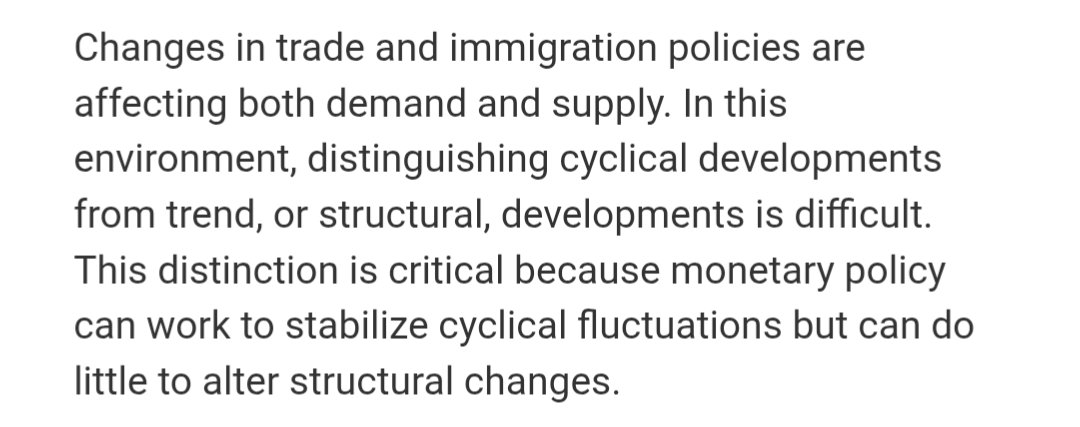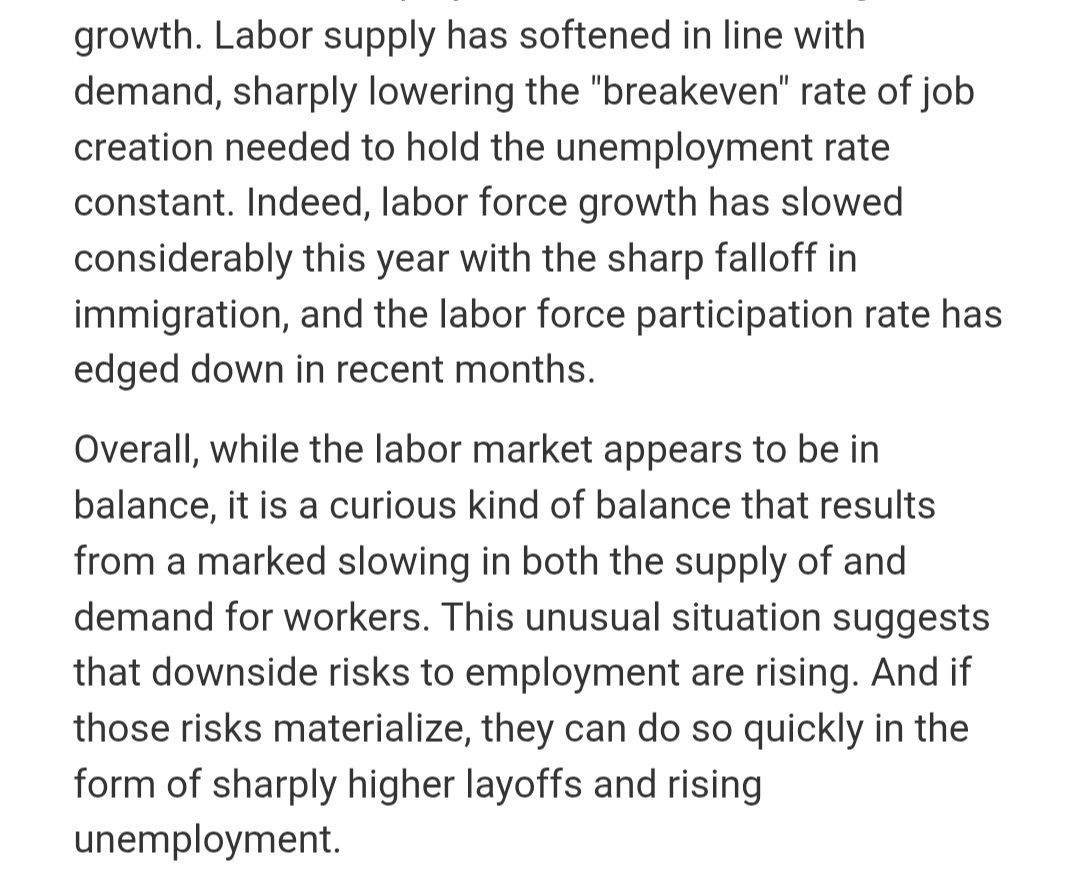
Macro musings not financial advice. If bonds are my bread & butter, stocks & fx are the ice cream. Everyone loves ice-cream bread once they try it.
22 subscribers
How to get URL link on X (Twitter) App


 2. The labour market is in a "curious balance" of showing signs of weakening while supply is lowering due to immigration dynamics and falling LFPR.
2. The labour market is in a "curious balance" of showing signs of weakening while supply is lowering due to immigration dynamics and falling LFPR.

 Cost to hedge USTs back to JPY are not prohibitive but they are still lower than investing domestically (note XCCY is quite shallow but negative)
Cost to hedge USTs back to JPY are not prohibitive but they are still lower than investing domestically (note XCCY is quite shallow but negative) 

 It's also worth noting in the above scatter that current levels are similar to 2007 and sorta-2001. Both pre-recession/bear market timeframes, with the path travelled similar as well (up and to the right followed by u-turn down). Meaning to say, the current bond market has continued to trade in a recessionary mindset.
It's also worth noting in the above scatter that current levels are similar to 2007 and sorta-2001. Both pre-recession/bear market timeframes, with the path travelled similar as well (up and to the right followed by u-turn down). Meaning to say, the current bond market has continued to trade in a recessionary mindset.



 There have been three major economic events in the last 6 months (I'm ignoring market events like August selloff) marked out on the chart:
There have been three major economic events in the last 6 months (I'm ignoring market events like August selloff) marked out on the chart: 

 drumroll please
drumroll please



 To set up the first part of this I will naively define the asset as being range-bound if it is trading in between two (or more) established levels in a lookback and trending to be anything outside of that.
To set up the first part of this I will naively define the asset as being range-bound if it is trading in between two (or more) established levels in a lookback and trending to be anything outside of that.

 One of the key tenets for this view is that with inflation moderating and (to a lesser extent) activity cooling, the NOMINAL Fed Funds rate, if left unchanged gets more restrictive as inflation falls due to the real-FF increasing (Nominal-FF minus Inflation = Real-FF). Thus, in order to cool the economy without overtightening the Fed has to cut rates.
One of the key tenets for this view is that with inflation moderating and (to a lesser extent) activity cooling, the NOMINAL Fed Funds rate, if left unchanged gets more restrictive as inflation falls due to the real-FF increasing (Nominal-FF minus Inflation = Real-FF). Thus, in order to cool the economy without overtightening the Fed has to cut rates.

 The previous thread on Economic Syncopation and trusting the data is here for your savage reviewing and scathing criticism.
The previous thread on Economic Syncopation and trusting the data is here for your savage reviewing and scathing criticism. https://twitter.com/EffMktHype/status/1732241858498298095

 If not already clear, by turning to RoC we want to observe the indicators' direction relative to one another but also whether they are growing or declining (i.e. +/- 0%)
If not already clear, by turning to RoC we want to observe the indicators' direction relative to one another but also whether they are growing or declining (i.e. +/- 0%)

 To be fair, the other curves steepened more, with the belly outperforming the most. But again, it raises the question of why we rallied so hard.
To be fair, the other curves steepened more, with the belly outperforming the most. But again, it raises the question of why we rallied so hard. 

https://x.com/EffMktHype/status/1619985221524520965?s=20

 Much of the pressure is in 10s but 30s bears (pun intended) watching. The 2022 rate hike campaign that ratcheted front end vol higher from monpolvol has ended. Recall that long end bonds were not spared - but they were passengers.
Much of the pressure is in 10s but 30s bears (pun intended) watching. The 2022 rate hike campaign that ratcheted front end vol higher from monpolvol has ended. Recall that long end bonds were not spared - but they were passengers.

 The point of a ratio is that is involves TWO moving parts. Now with that in mind, let's try to deconstruct this ratio and find some sense in it. The obvious questions are
The point of a ratio is that is involves TWO moving parts. Now with that in mind, let's try to deconstruct this ratio and find some sense in it. The obvious questions are 
 The idea that 2s always exceed FF in a hiking cycle is something I am guilty of proposing, even back in August when 2s were sub-3.50%
The idea that 2s always exceed FF in a hiking cycle is something I am guilty of proposing, even back in August when 2s were sub-3.50%https://twitter.com/EffMktHype/status/1563221345093054464?s=20

 First we set up some variables to help measure fucks. Default it to 2% close to close change for a threshold in fucker and 20 intervals for the fuckery lookback.
First we set up some variables to help measure fucks. Default it to 2% close to close change for a threshold in fucker and 20 intervals for the fuckery lookback.





 First, let's define a systematic approach. You're essentially taking defined and measurable inputs and packaging them together to form coherent and consistent rules to establishing positions in various market instruments.
First, let's define a systematic approach. You're essentially taking defined and measurable inputs and packaging them together to form coherent and consistent rules to establishing positions in various market instruments.